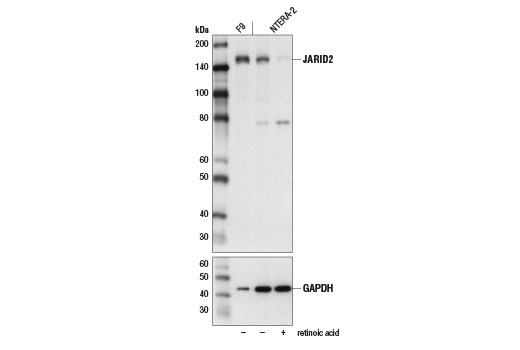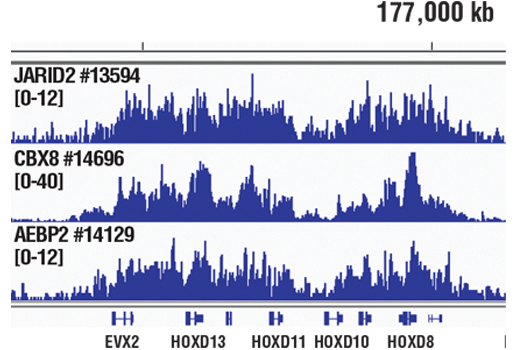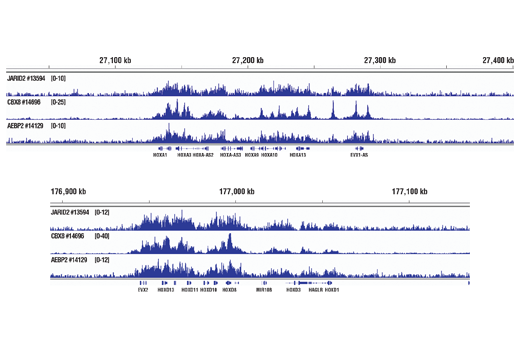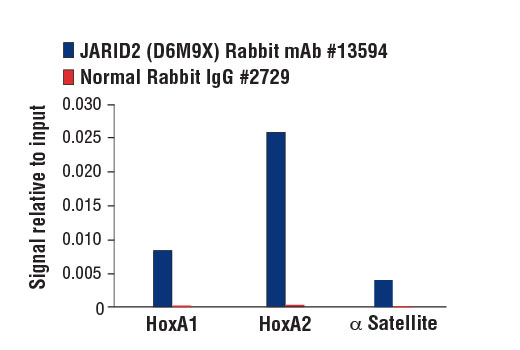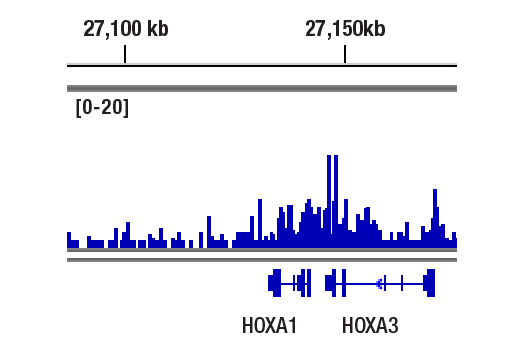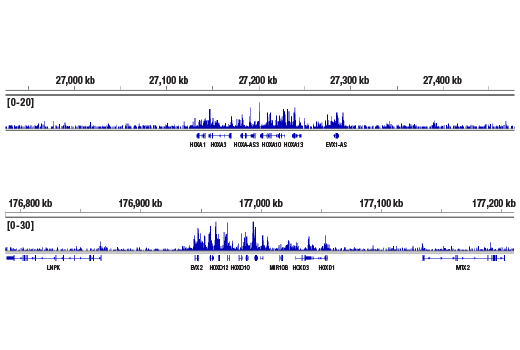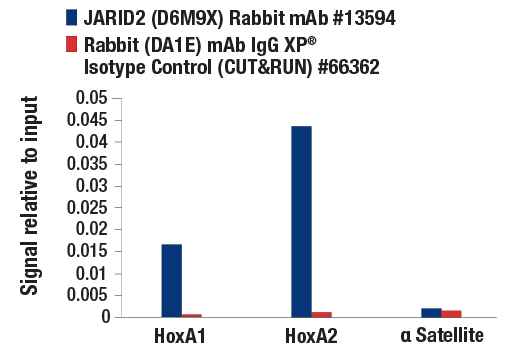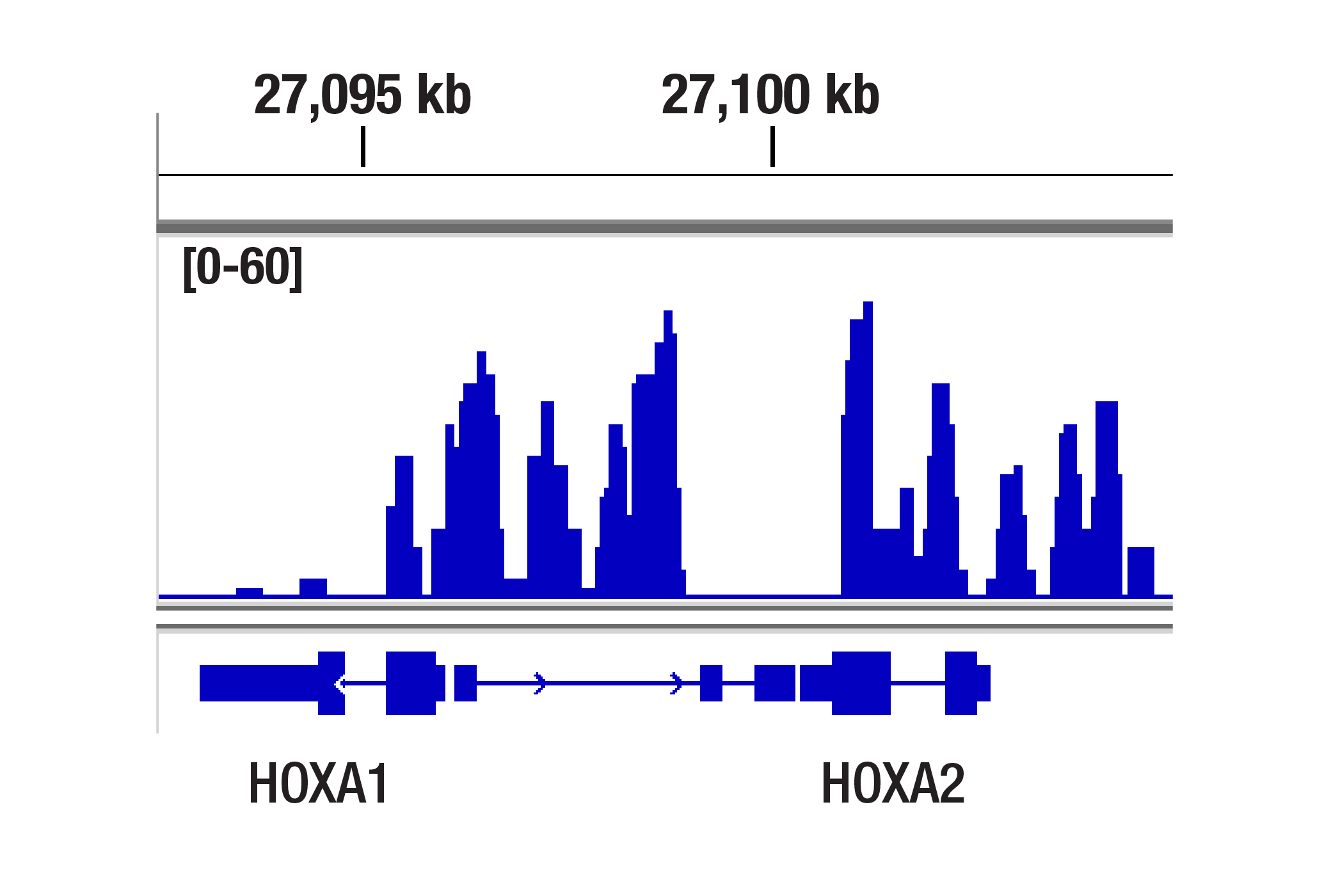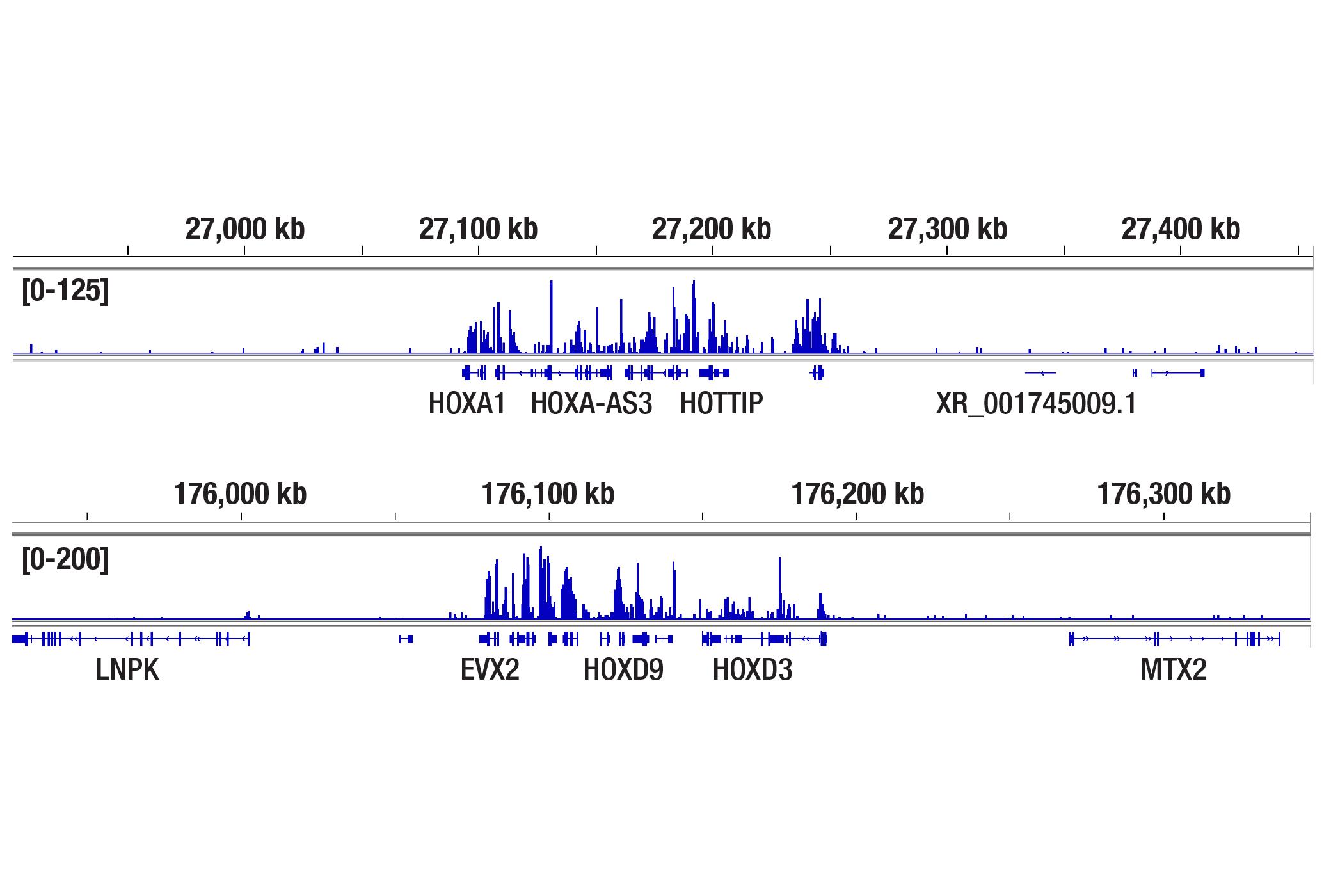WB, IP, ChIP, ChIP-seq, C&R, C&T
H M
Endogenous
150
Rabbit IgG
#Q92833
3720
Product Information
Product Usage Information
The CUT&RUN dilution was determined using CUT&RUN Assay Kit #86652.
The CUT&Tag dilution was determined using CUT&Tag Assay Kit #77552.
| Application | Dilution |
|---|---|
| Western Blotting | 1:1000 |
| Immunoprecipitation | 1:200 |
| Chromatin IP | 1:50 |
| Chromatin IP-seq | 1:50 |
| CUT&RUN | 1:50 |
| CUT&Tag | 1:50 |
Storage
Specificity / Sensitivity
Species Reactivity:
Human, Mouse
Species predicted to react based on 100% sequence homology
The antigen sequence used to produce this antibody shares
100% sequence homology with the species listed here, but
reactivity has not been tested or confirmed to work by CST.
Use of this product with these species is not covered under
our
Product Performance Guarantee.
Horse
Source / Purification
Monoclonal antibody is produced by immunizing animals with a synthetic peptide corresponding to residues surrounding Asp1114 of human JARID2 protein.
Background
Jumonji/ARID domain-containing protein 2 (JARID2) is a founding member of the JmjC-domain-containing protein family that is involved in regulation of histone methyltransferase activity (1,2). While many proteins in this family are protein demethylases, JARID2 lacks several conserved residues in the catalytic domain and does not exhibit protein demethylase activity (1,2). Research studies indicate that JARID2 is a nuclear protein that is highly expressed in poorly differentiated and actively dividing cells, with expression decreasing upon cellular differentiation (3,4). Expression of JARID2 protein is essential for embryonic development as the protein plays an important role in regulation of heart and liver development, neural tube fusion, and hematopoiesis (4). JARID2 is an accessory component of the polycomb repressor complex 2 (PRC2), which represses target gene expression through methylation of histone H3 at lysine 27 by EZH2 methyltransferase (5-10). JARID2 recruits the PRC2 complex to target genes and increases EZH2 methyltransferase activity by binding to nucleosomes and DNA (5-10). Additional studies show that loss of JARID2 expression results in decreased recruitment of PRC2, decreased methylation of histone H3 at lysine 27 at target genes, and delayed and incomplete differentiation of embryonic stem cells (5-10). Experimental knockdown of JARID2 in Xenopus laevis impairs the induction of gastrulation genes in blastula embryos and results in differentiation failure (5).
- Cloos, P.A. et al. (2008) Genes Dev 22, 1115-40.
- Klose, R.J. et al. (2006) Nat Rev Genet 7, 715-27.
- Luzzani, C. et al. (2011) Biochem Biophys Res Commun 410, 816-22.
- Jung, J. et al. (2005) Dev Dyn 232, 21-32.
- Peng, J.C. et al. (2009) Cell 139, 1290-302.
- Shen, X. et al. (2009) Cell 139, 1303-14.
- Pasini, D. et al. (2010) Nature 464, 306-10.
- Li, G. et al. (2010) Genes Dev 24, 368-80.
- Son, J. et al. (2013) Genes Dev 27, 2663-77.
- Kaneko, S. et al. (2014) Mol Cell 53, 290-300.
Species Reactivity
Species reactivity is determined by testing in at least one approved application (e.g., western blot).
Western Blot Buffer
IMPORTANT: For western blots, incubate membrane with diluted primary antibody in 5% w/v nonfat dry milk, 1X TBS, 0.1% Tween® 20 at 4°C with gentle shaking, overnight.
Applications Key
WB: Western Blotting IP: Immunoprecipitation ChIP: Chromatin IP ChIP-seq: Chromatin IP-seq C&R: CUT&RUN C&T: CUT&Tag
Cross-Reactivity Key
H: human M: mouse R: rat Hm: hamster Mk: monkey Vir: virus Mi: mink C: chicken Dm: D. melanogaster X: Xenopus Z: zebrafish B: bovine Dg: dog Pg: pig Sc: S. cerevisiae Ce: C. elegans Hr: horse GP: Guinea Pig Rab: rabbit All: all species expected
Trademarks and Patents
使用に関する制限
法的な権限を与えられたCSTの担当者が署名した書面によって別途明示的に合意された場合を除き、 CST、その関連会社または代理店が提供する製品には以下の条件が適用されます。お客様が定める条件でここに定められた条件に含まれるものを超えるもの、 または、ここに定められた条件と異なるものは、法的な権限を与えられたCSTの担当者が別途書面にて受諾した場合を除き、拒絶され、 いかなる効力も効果も有しません。
研究専用 (For Research Use Only) またはこれに類似する表示がされた製品は、 いかなる目的についても FDA または外国もしくは国内のその他の規制機関により承認、認可または許可を受けていません。 お客様は製品を診断もしくは治療目的で使用してはならず、また、製品に表示された内容に違反する方法で使用してはなりません。 CST が販売または使用許諾する製品は、エンドユーザーであるお客様に対し、使途を研究および開発のみに限定して提供されるものです。 診断、予防もしくは治療目的で製品を使用することまたは製品を再販売 (単独であるか他の製品等の一部であるかを問いません) もしくはその他の商業的利用の目的で購入することについては、CST から別途許諾を得る必要があります。 お客様は以下の事項を遵守しなければなりません。(a) CST の製品 (単独であるか他の資材と一緒であるかを問いません) を販売、使用許諾、貸与、寄付もしくはその他の態様で第三者に譲渡したり使用させたりしてはなりません。また、商用の製品を製造するために CST の製品を使用してはなりません。(b) 複製、改変、リバースエンジニアリング、逆コンパイル、 分解または他の方法により製品の構造または技術を解明しようとしてはなりません。また、 CST の製品またはサービスと競合する製品またはサービスを開発する目的で CST の製品を使用してはなりません。(c) CST の製品の商標、商号、ロゴ、特許または著作権に関する通知または表示を除去したり改変したりしてはなりません。(d) CST の製品をCST 製品販売条件(CST’s Product Terms of Sale) および該当する書面のみに従って使用しなければなりません。(e) CST の製品に関連してお客様が使用する第三者の製品またはサービスに関する使用許諾条件、 サービス提供条件またはこれに類する合意事項を遵守しなければなりません。
